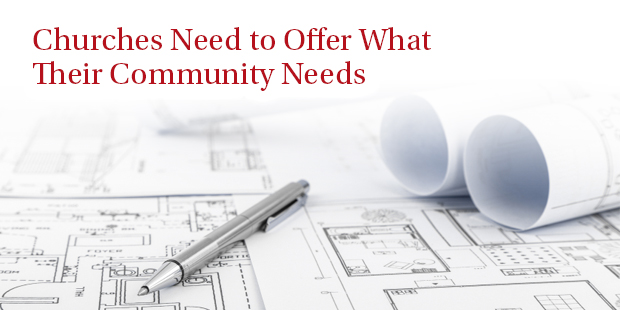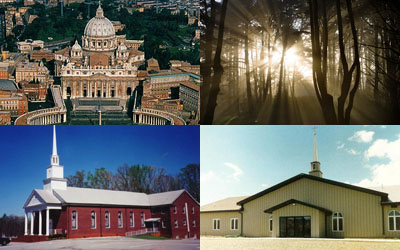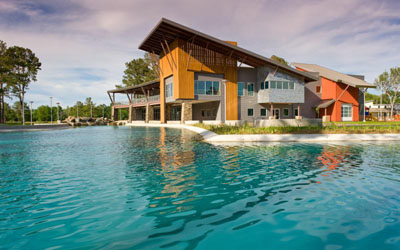
Churches Need to Offer What Their Community Needs
I hope you are ready to jump into some controversy with me today because I’m going to talk about things that many Christians (and many “church architects”) take personally and seriously…what a church “should” look like. But, I may surprise you with the analysis if you think you know where I’m heading because at Visioneering Studios, we are challenging the way people think about the purpose and design of church facilities from the ground up.
I guess the best place to start is at the beginning. Let’s start with the definition of “church”. Webster’s defines “church” as, “1) a group of Christians; any group professing Christian doctrine or belief; 2) a place for public (especially Christian) worship.” Is this definition in alignment with the Biblical definition of “church”? The Greek word for church is “ekklesia”, which means “that which is called out,” and that is the only word for Church in the whole Bible (and it is only used in the New Testament). Obviously this is talking about the people who have been “called out” and become followers of Jesus. Jesus even said in Matthew 18:20, “For where two or three come together in my name, there am I with them.”
Wherever followers of Christ gather together there is the church. So, how did we get so confused and hung up on the form and structure of a building that we refer to as the “church” and that to most people, especially non-Christians, is seen as THE church? Jesus’ first “church” services took place on hillsides or beside lakes while he spoke from a boat. The disciples first “church” service (the day of Pentecost) took place in the temple court. First century churches met in houses and wherever there was room for people to gather.
Clockwise from top left – St. Peters, God’s Creation, Traditional Church, Metal Box
Somewhere along the way “churches” started to become buildings, and they became “sacred” spaces that required design of a certain type. I can stand amazed in front of St. Peter’s in Rome or any number of other cathedrals throughout the world and feel staggeringly overwhelmed at the intricacy and details involved in those structures, but I can also stand awestruck in a forest or on a beach and wonder about the miracle of God’s creation. I can sit in a “traditional” church complete with stained glass, steeple, and pews and be lifted up before God’s throne in worship, but I can also sit in a pre-engineered metal warehouse with a small group of believers who have scraped together all they had to build their first building and be touched to my soul by a stirring message delivered from a down-to-earth preacher.
What we all have to realize is that “traditional” or “contemporary” are just man-made concepts that are totally unrelated to salvation. It may seem patently obvious to state it this way, but Jesus didn’t sit in a pew or a theater seat. He didn’t sing from a hymnal while a pipe organ played or sing with words on a screen while a band rocked out. He didn’t wear a suit and tie or a t-shirt and shorts. He didn’t preach in a church with stained glass windows and a steeple, or in a church with a coffee shop and a video venue.
The message of the Bible is timeless, but the presentation of the message is cultural. Jesus reached people where they were in that day and time in a method and in a location that they could be comfortable and relate to (see John 4:4-26 about the Samaritan woman at the well). I strongly believe that if Jesus was walking around in America today He would be using technology, music, buildings, and everything else at His disposal as tools to reach people where they are.
Northside Christian Church – Spring, TX. Design by Visioneering Studios. Photo by G. Lyon Photography.
I’m not saying there is anything wrong with traditional buildings, or pipe organs, or hymnals, but I would ask you to look in your heart and ask yourself if your church is being as effective as they could be in reaching your community and the unchurched in today’s culture using methods and facility prototypes created hundreds of years ago. Would you like your doctor to use leeches and other medical “technology” of a few hundred years ago to treat you today? I wouldn’t, which is why I think it is important to examine the methods we use to “treat” those in need of the ultimate healing. What type of places and buildings do people choose to go to spend their free time? What type of music do people choose to listen to on their iPods? Churches need to be offering their community what their community needs. The church facility can be a 7-day-a-week Christ-centered community instead of a 2-hour-a-week Christian insider’s club.
Don’t ever compromise the message. Don’t ever change the story of salvation. But, maybe it’s time to look at the method and environment where that message is shared. Is it more important to keep things they way they’ve always been because the people who are already “saved” and are already inside the walls of the church like it that way? Or is it better to find out what will reach those outside of the walls and make them comfortable stepping foot inside the doors of your church even if it makes the “insiders” uncomfortable? Are you willing to sacrifice your comfort to reach out to others? Isn’t that why the church exists? All I’m asking is for you to think about it.
Be intentional.

Tags: Culture, Jody Forehand, Visioneering Studios













